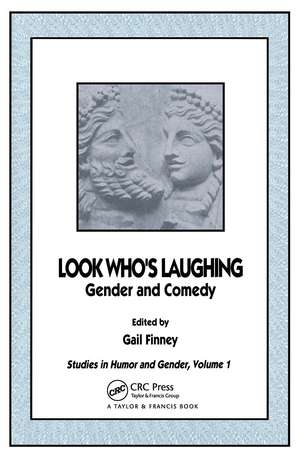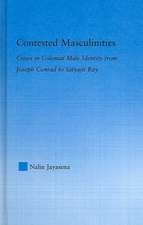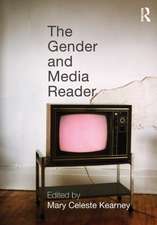Look Who's Laughing: Gender and Comedy
Autor Gail Finneyen Limba Engleză Paperback – 16 iun 1994
Preț: 357.17 lei
Nou
Puncte Express: 536
Preț estimativ în valută:
68.35€ • 71.10$ • 56.43£
68.35€ • 71.10$ • 56.43£
Carte tipărită la comandă
Livrare economică 15-29 aprilie
Preluare comenzi: 021 569.72.76
Specificații
ISBN-13: 9782881246456
ISBN-10: 2881246451
Pagini: 376
Dimensiuni: 152 x 229 x 21 mm
Greutate: 0.48 kg
Ediția:New.
Editura: Taylor & Francis
Colecția Routledge
Locul publicării:Oxford, United Kingdom
ISBN-10: 2881246451
Pagini: 376
Dimensiuni: 152 x 229 x 21 mm
Greutate: 0.48 kg
Ediția:New.
Editura: Taylor & Francis
Colecția Routledge
Locul publicării:Oxford, United Kingdom
Recenzii
"So-how often does a book of `lit crit' make you giggle, snicker, snort, titter, and chuckle, while admiring its sagacity and perspicacity? BLook Who's Laughing/B has jokes, wisdom, wit, stand-up comedy, anarchy, Roseanne, and Mae West. Who could ask for anything more?"
Notă biografică
Gail Finney University of California, Davis
Cuprins
Chapter 1 Unity in Difference?: An Introduction, Gail Finney; Part I Drama; Chapter 2 “That’s How It Is”: Comic Travesties of Sex and Gender in Early Sixteenth-Century Venice, Eric A. Nicholson; Chapter 3 Imagining Consummation: Women’s Erotic Language in Comedies of Dekker and Shakespeare, Mary Bly; Chapter 4 Dwindling into Wifehood: The Romantic Power of the Witty Heroine in Shakespeare, Dryden, Congreve, and Austen, Donald A. Bloom; Chapter 5 Confinement Sharpens the Invention: Aphra Behn’s The Rover and Susanna Centlivre’s The Busie Body, Suz-Anne Kinney; Chapter 6 Masquerade, Modesty, and Comedy in Hannah Cowley’s The Belle’s Strategem, Erin Isikoff; Chapter 7 The Sphinx Goes Wild(e): Ada Leverson, Oscar Wilde, and the Gender Equipollence of Parody, Corinna Sundararajan Rohse; Part II Fiction; Chapter 8 When Women Laugh Wildly and (Gentle)Men Roar: Victorian Embodiments Of Laughter, Karen C. Gindele; Chapter 9 The Feminine Laughter of No Return: James Joyce and Dorothy Richardson, Kristin Bluemel; Chapter 10 Courtship, Comedy, and African-American Expressive Culture in Zora Neale Hurston’s Fiction, Barbara Monroe; Chapter 11 Feminism/Gender/Comedy: Meredith, Woolf, and the Reconfiguration of Comic Distance, David McWhirter; Chapter 12 “Between the Gaps”: Sex, Class and Anarchy in the British Comic Novel of World War II, Phyllis Lassner; Chapter 13 Alice Childress’s Like One of the Family: Domestic and Undomesticated Domestic Humor, Zita Z. Dresner; Chapter 14 Funny, Isn’t It?: Testing the Boundaries of Gender and Genre in Women’s Detective Fiction, Gloria A. Biamonte; Part III Film, Stand-Up Comedy, and Cartoon Art; Chapter 15 Hollywood, 1934: “Inventing” Romantic Comedy, Kay Young; Chapter 16 Mae West Was Not a Man: Sexual Parody and Genre in the Plays and Films of Mae West, Andrea J. Ivanov; Chapter 17 Women on the Verge of a Nervous Breakdown: Sexism or Emancipation from Machismo?, Florence Redding Jessup; Chapter 18 Between the Laughter: Bridging Feminist Studies through Women’s Stand-Up Comedy, Allison Fraiberg; Chapter 19 Comic Strip-Tease: A Revealing Look at Women Cartoon Artists, Jaye Berman Montresor;



















